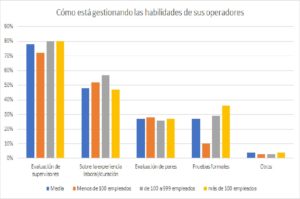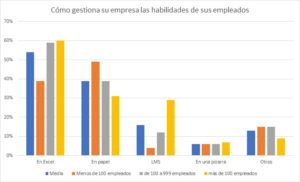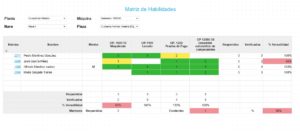In the era of Industry 4.0, smart factories are no longer science fiction; they are a reality.
In the era of Industry 4.0, smart factories are no longer science fiction; they are a reality. Machines that can communicate with each other and with other systems within the company are essential for successful manufacturing processes. Equally important is having a workforce that is well-trained and possesses the necessary skills to operate equipment correctly and troubleshoot issues as they arise.
However, as the demand for highly skilled workers increases, the available workforce continues to decline due to retirement, a lack of interest in manufacturing careers among younger generations, and constant employee turnover. This makes it even more challenging for manufacturers to fill the skill gaps necessary for maintaining daily operations, let alone keep up with the latest technological advancements for operating a smart factory.
Therefore, we must ensure that both new employees and current factory workers are trained as quickly as possible to operate multiple machines, workstations, and product lines, both existing and future, while maintaining continuous visibility of their skill development. This process is more important now than ever.
Skills Assessment
To make matters worse, many manufacturers are still relying on outdated manual solutions to address skill development and management. According to a recent Industry Week survey, 78% of manufacturers depend on supervisors to assess operators’ skill levels, while 48% cite the number of years on the job.

Question: How is your company managing employee skills?
Base: 425 companies. Multiple responses are allowed
This is problematic for two reasons. First, years of service for a worker is not always an accurate measure of an employee’s ability to perform according to standards, as individuals may have received inconsistent training and exposure to tasks over that time, developing at different rates. The only way to truly assess whether they have developed all the necessary and updated skills is to first document the standard work processes and then test their knowledge and evaluate their performance.
Second, relying solely on supervisors’ judgment can lead to inconsistent skill assessments unless a formal and standardized method is used across the workforce and operations. Without that, there’s no way to know for certain if operators have been properly trained, gained the same experience, and whether their skills are up to date to support the latest SOPs and improvements in smart factories. It goes without saying that inconsistent training leads to inconsistent performance, higher accident rates, and employee dissatisfaction and turnover.
Skills Management
Once the operators’ skills have been properly assessed, management and the human resources department must continuously monitor the development of their workforce to identify current and future skill gaps and take corrective action to ensure there are no disruptions in production due to a lack of qualified personnel or available resources.
However, the problem is that many manufacturing companies are tracking skills using outdated methods that do not provide easy, real-time visibility into the most up-to-date information. In fact, 54% of manufacturers use Excel to track skills, while 49% still use paper, and 6% use a whiteboard, according to research from Industry Week.

How does your company track employee skills?
Base: 419 companies. Multiple responses are allowed
This means that a worker, often involved in a learning and development process or in production, must manually maintain a skills matrix. This administrative burden not only requires more work hours each week but also introduces the possibility of human error, which is a particular concern for any mandatory certification.
Moreover, when skills are tracked using these manual methods, there is often a time lag between when an operator completes their training and when the skills matrix is updated. As a result, production may not have the most current information when reviewing individuals’ skills and developing talent management strategies and programs.
Finally, if the skills matrix is not shared with employees—which is often the case—they lack visibility into their current development and, even less, a clear roadmap of the skills they are missing and need to work on next. This can lead to poor communication, lower employee job satisfaction, and higher turnover rates.
Intelligent Skills Management for the Smart Factory

Increasingly, today’s smart factories assess and track skills digitally through a more holistic approach using technologies like BLManufactura. Specifically designed for the production floor, this training, communication, and skills management application provides manufacturers with real-time visibility and control over their workforce development. The software application allows management and HR to quickly and easily:
- Assign skills to operators based on role and location.
- Create a multi-step training program for all necessary skills.
- Train operators using videos, instructions, and just-in-time tracking.
- Evaluate operators’ skills through exams and document supervisor endorsements.
- Create a skills matrix and track pending and completed training for each operator.
- Automatically send notifications and reminders to operators to complete training.


